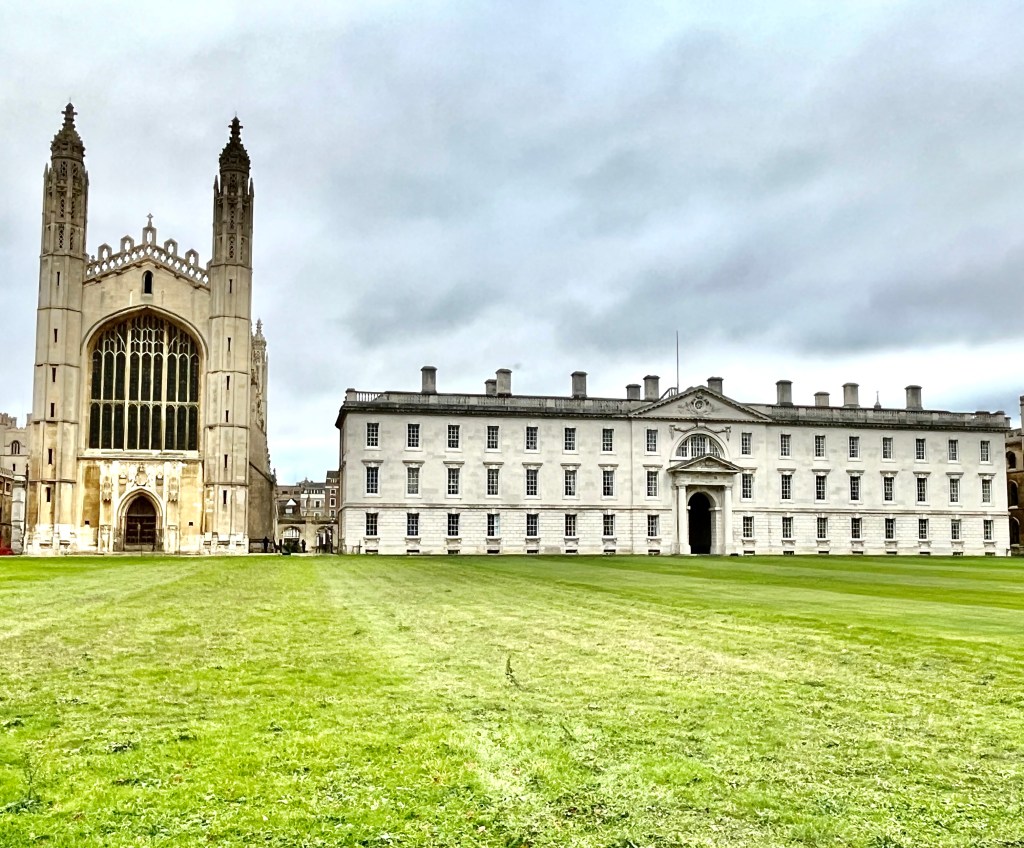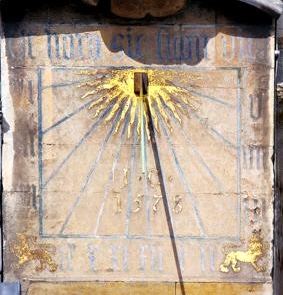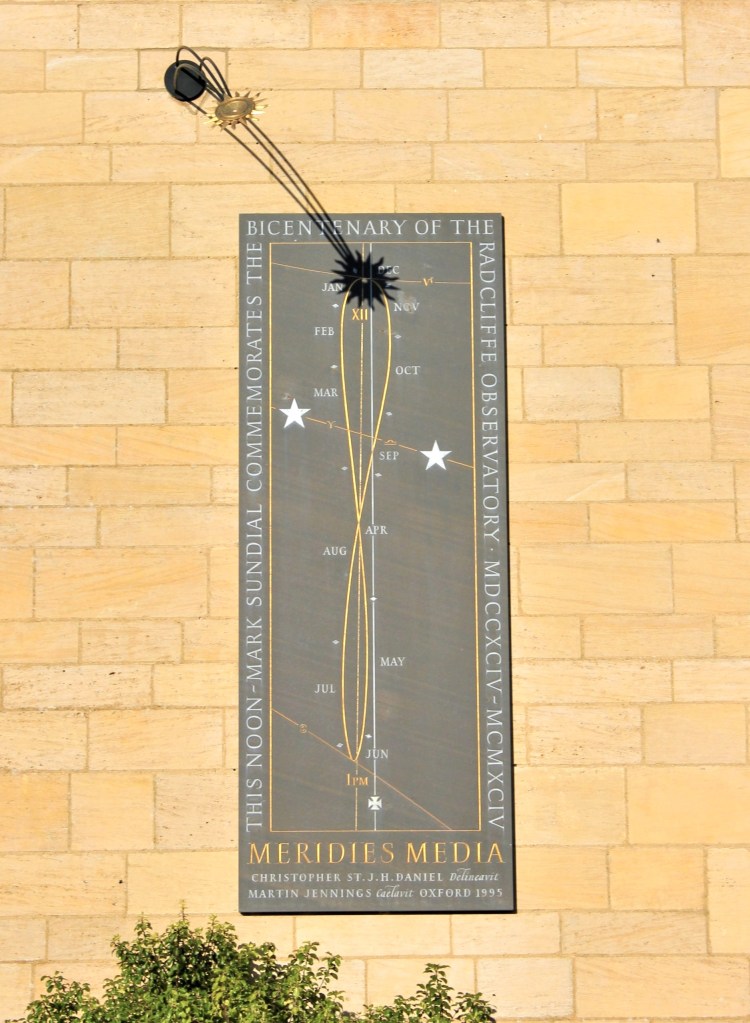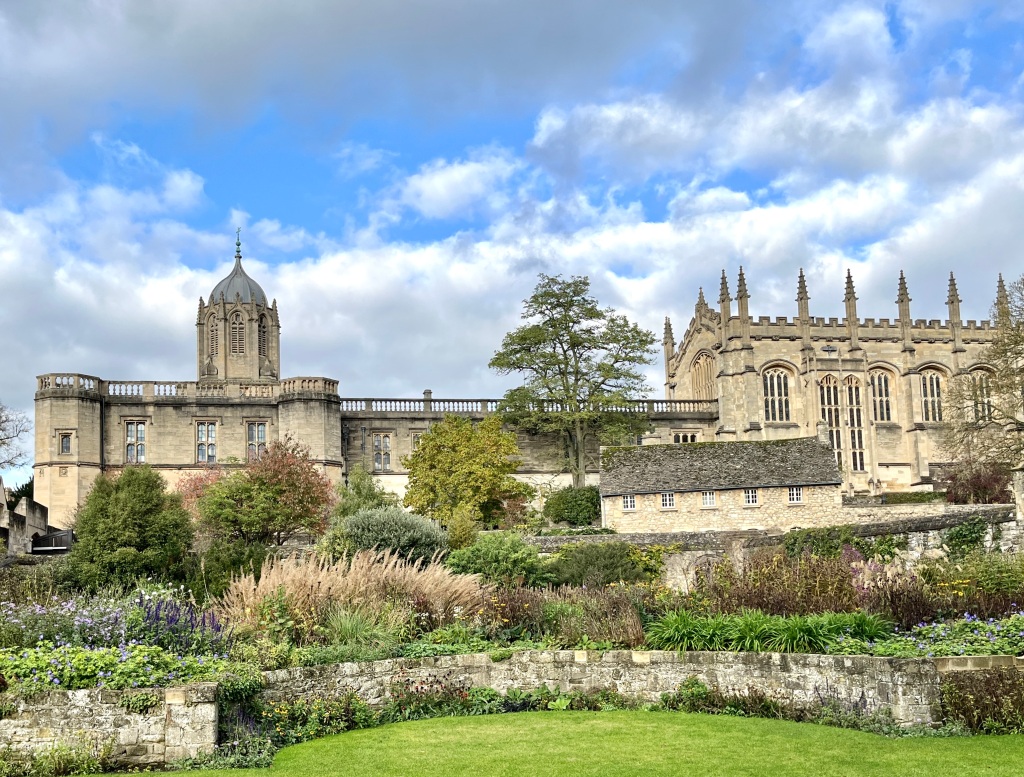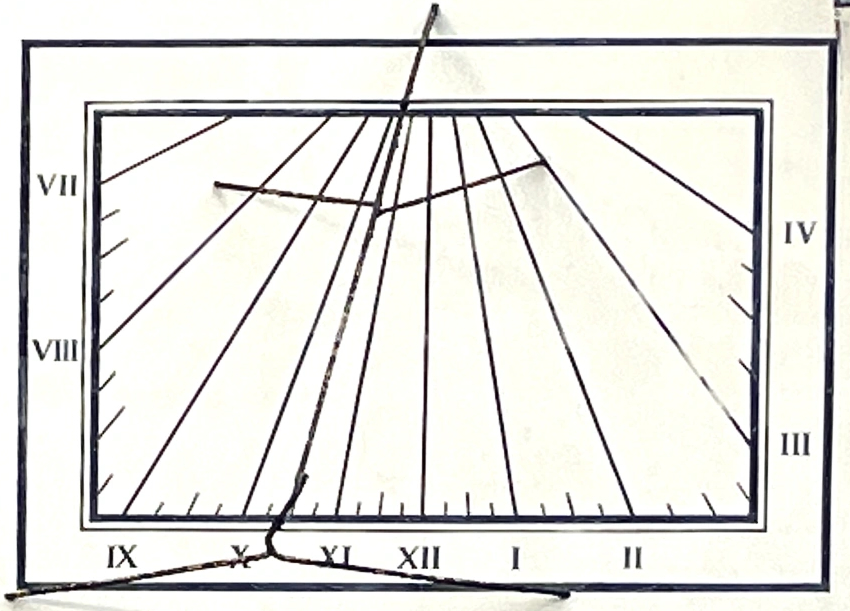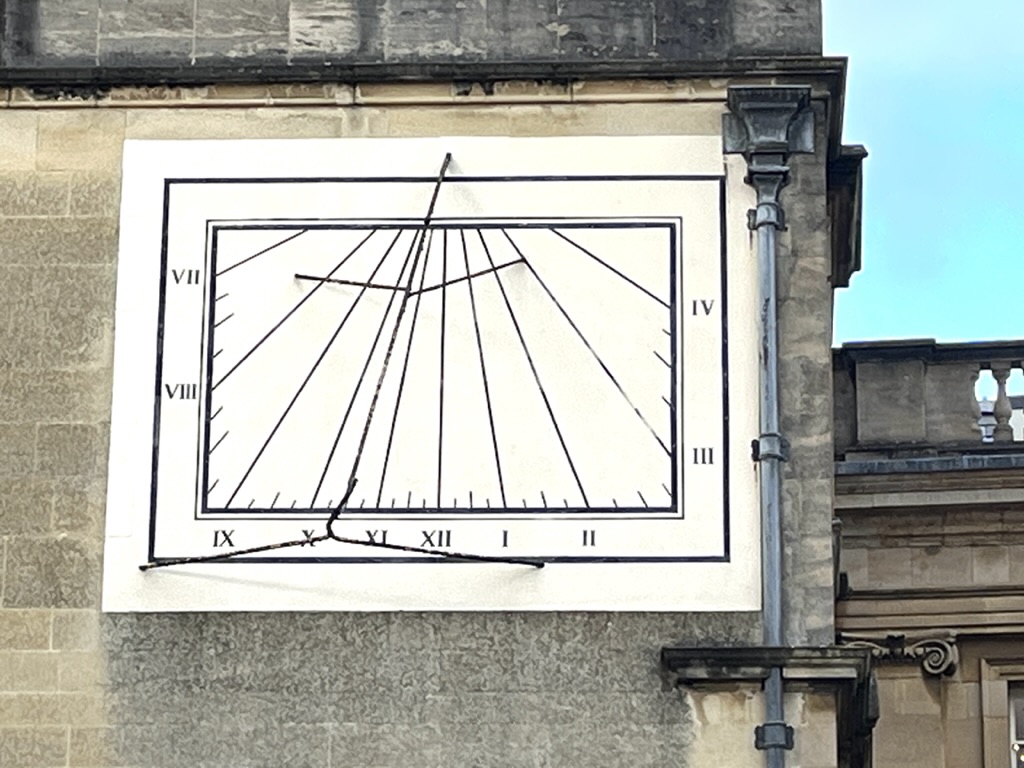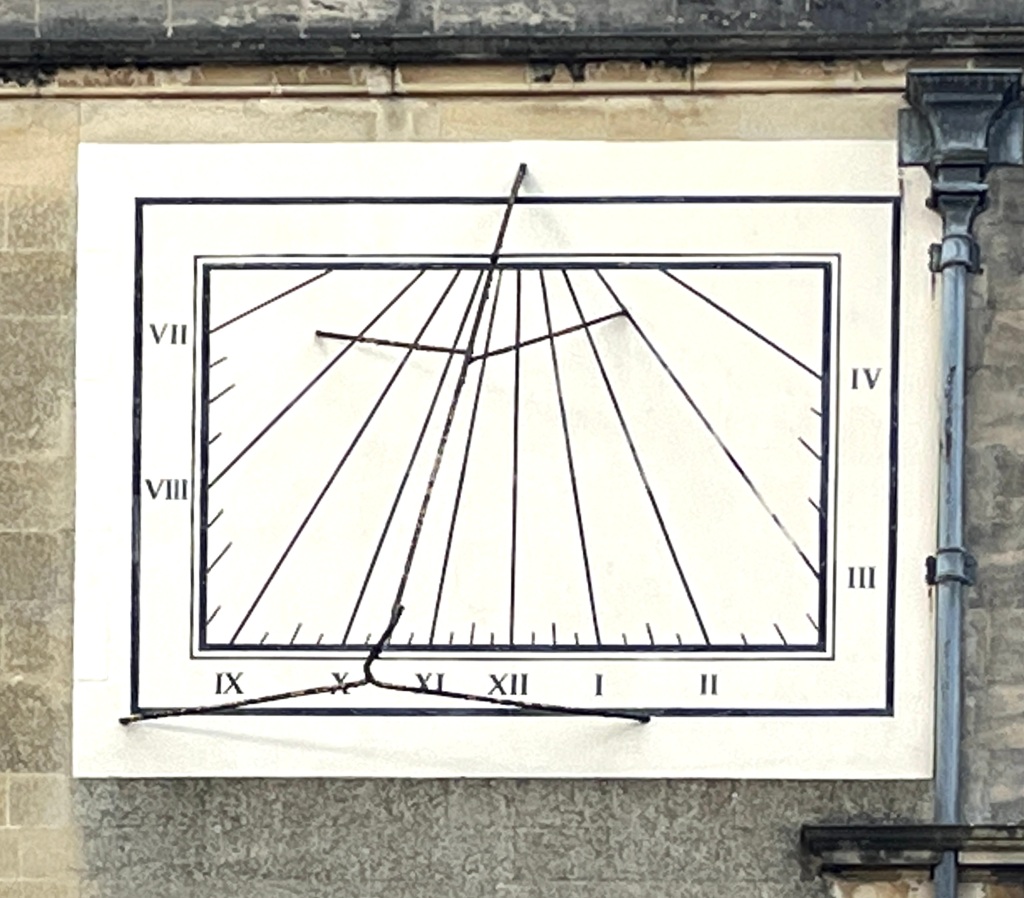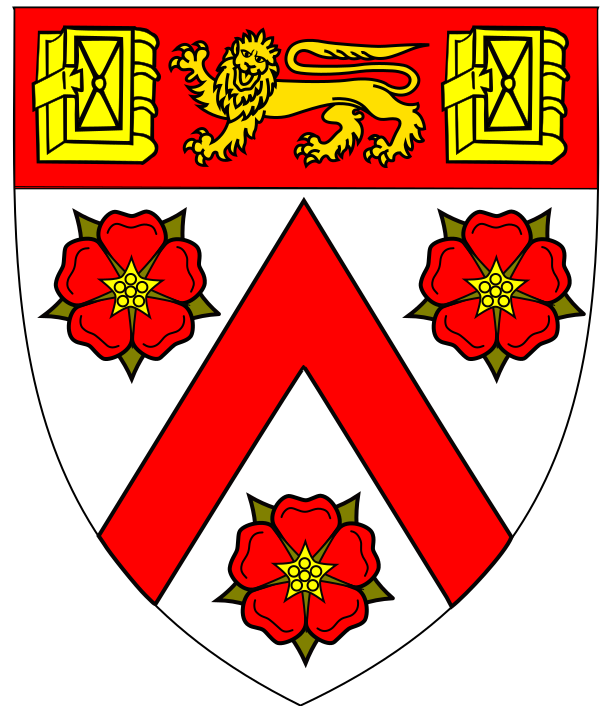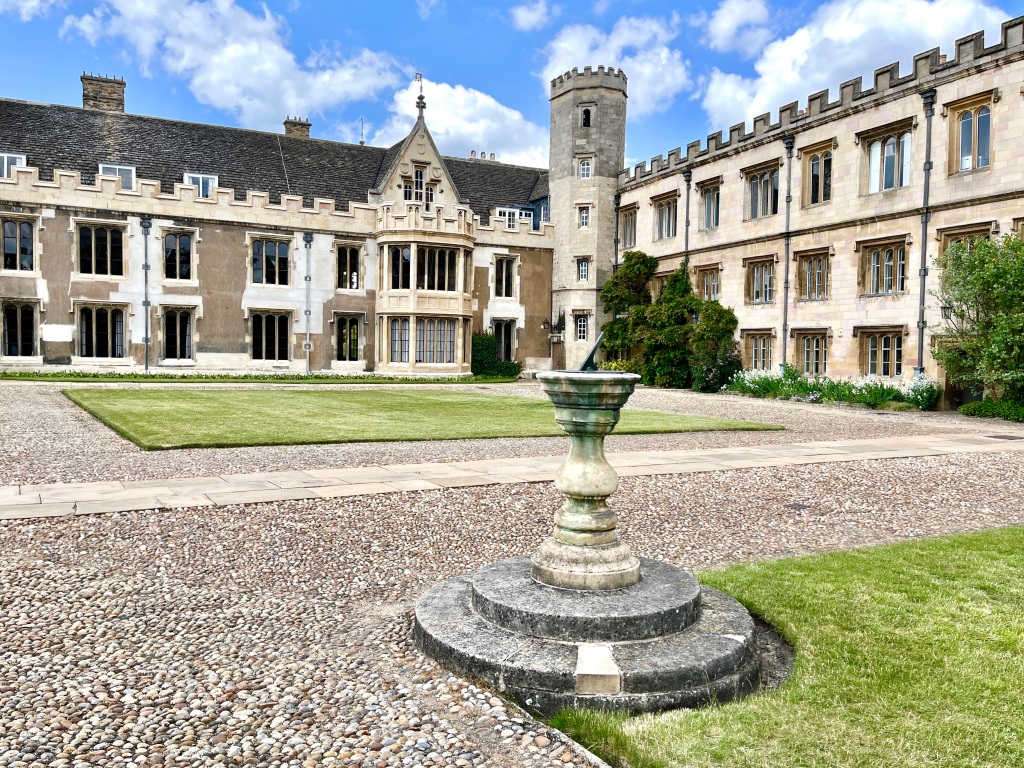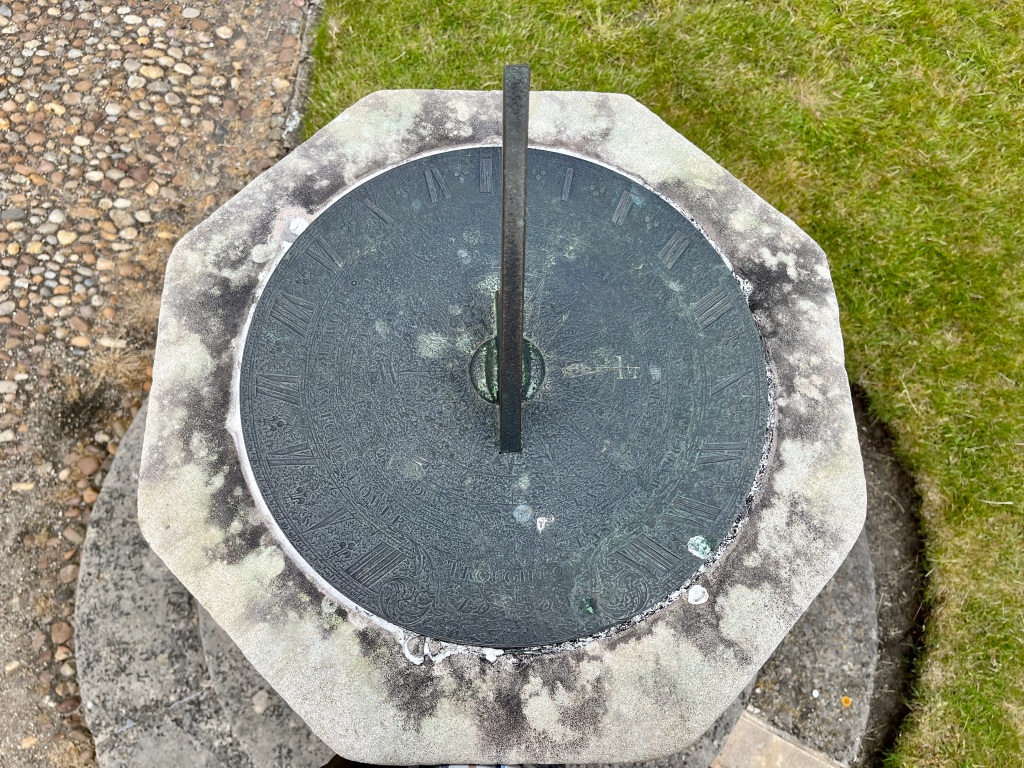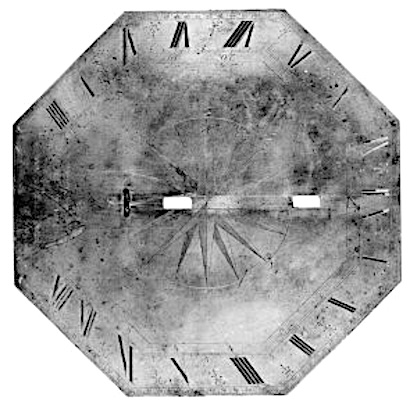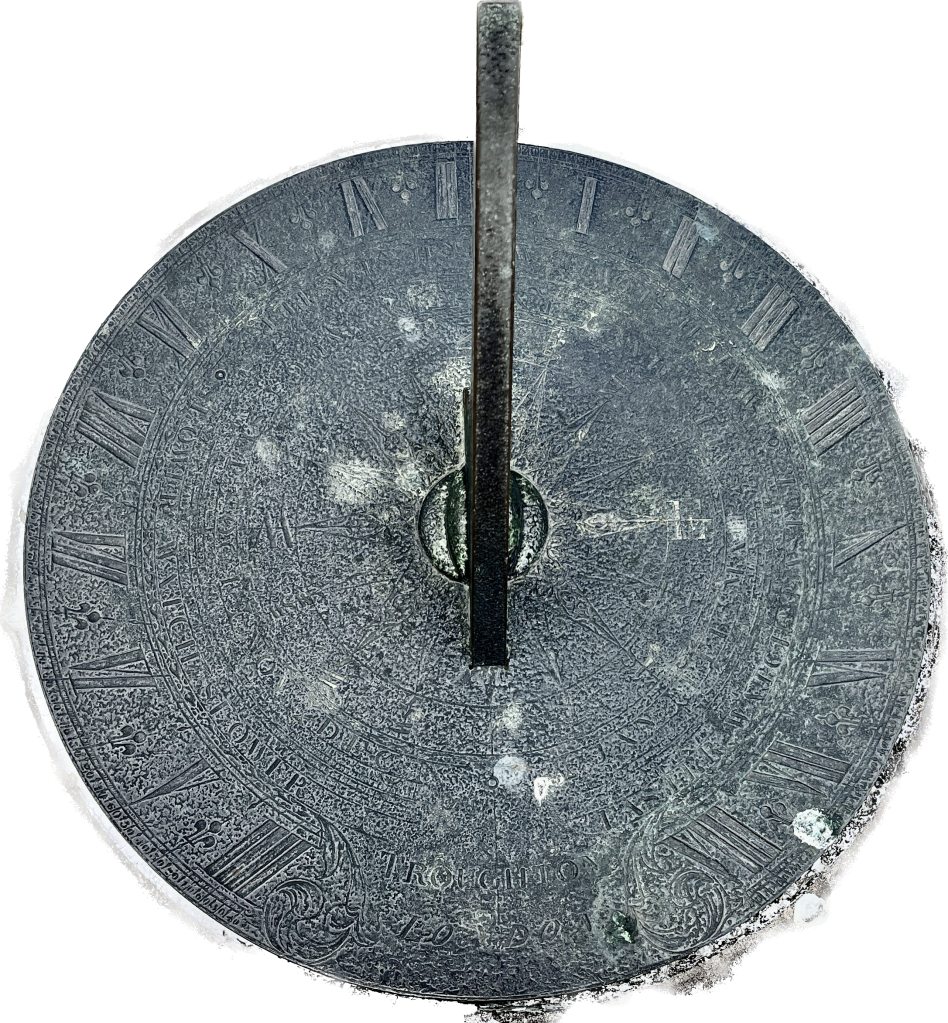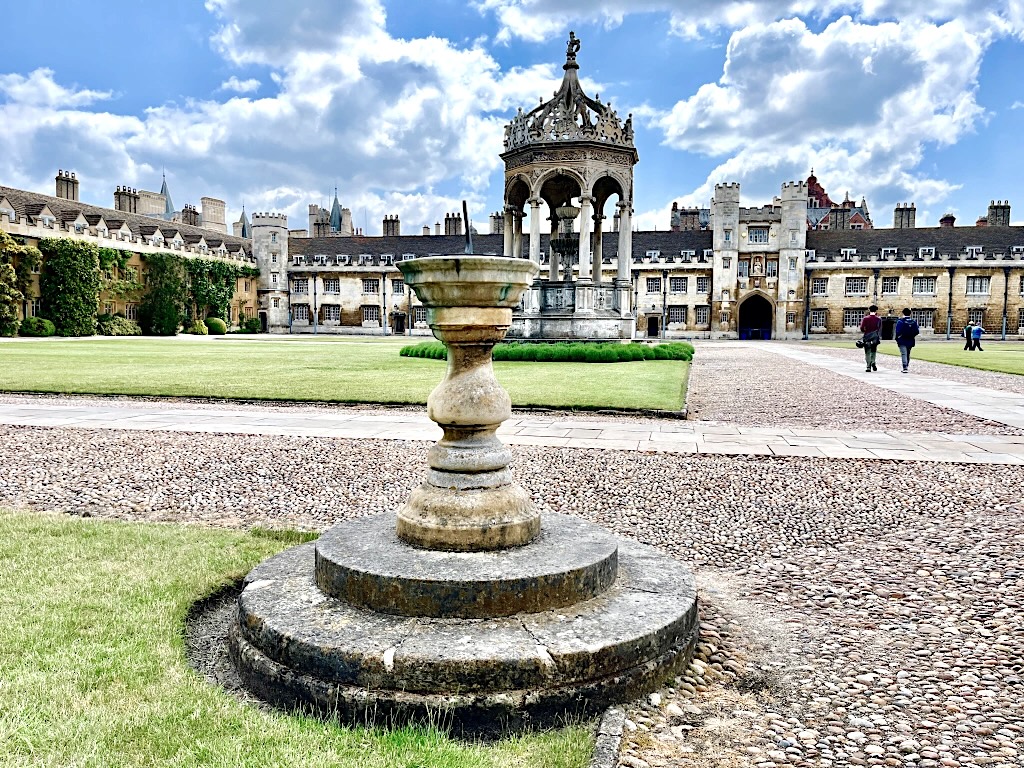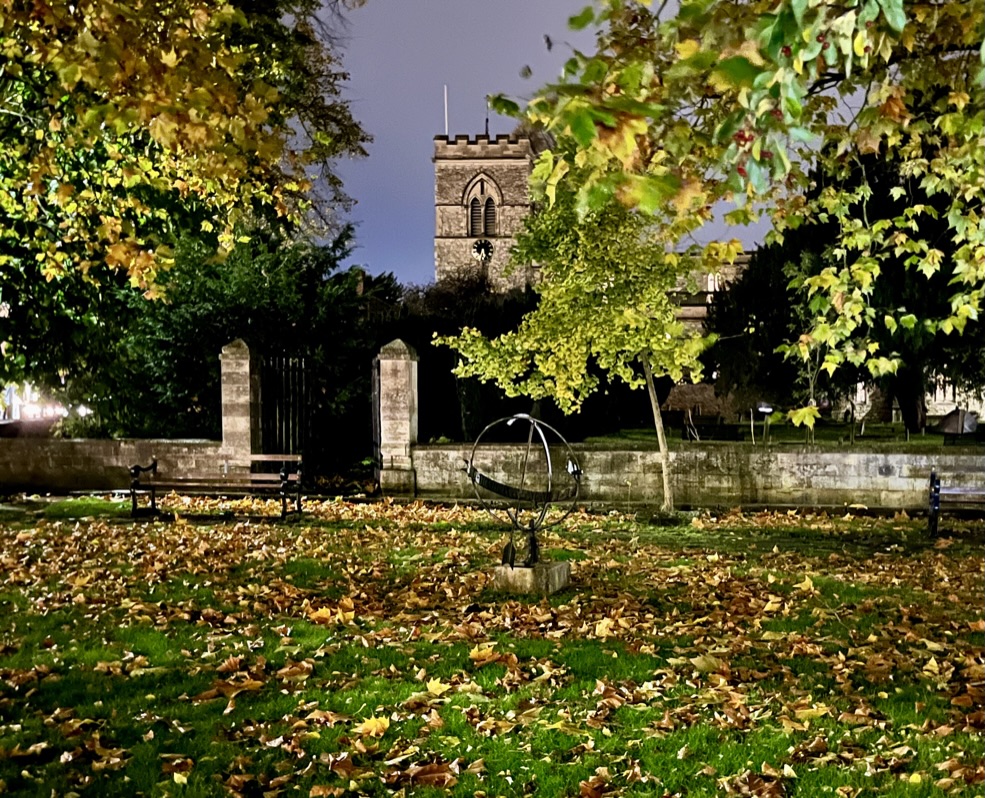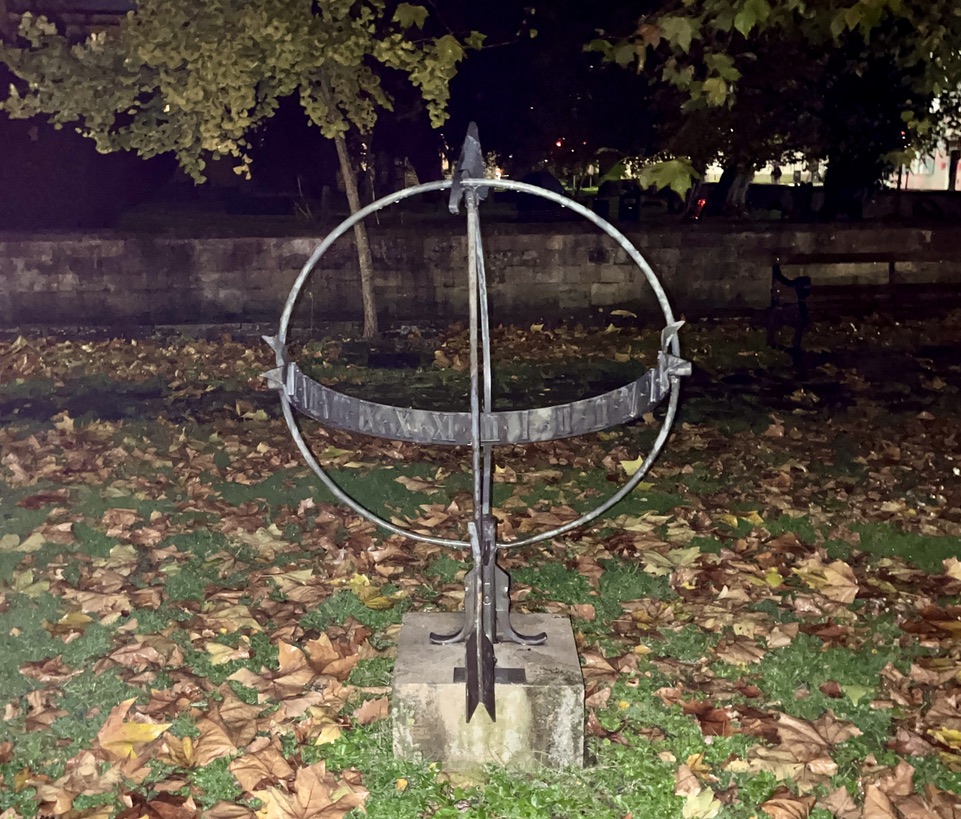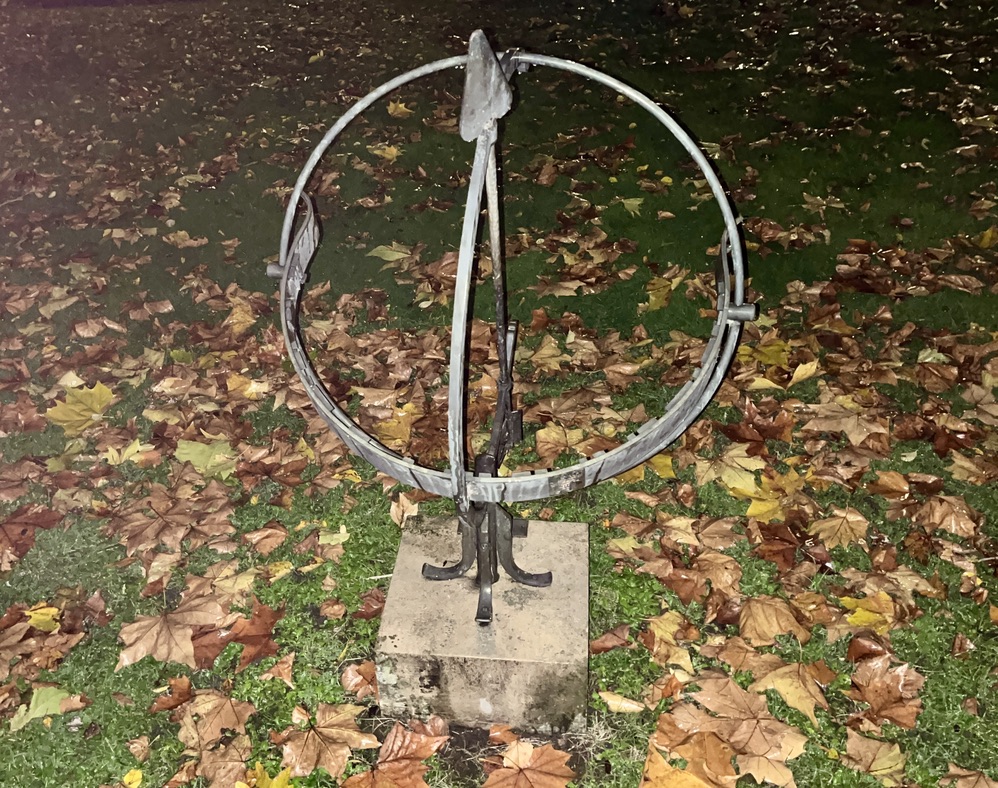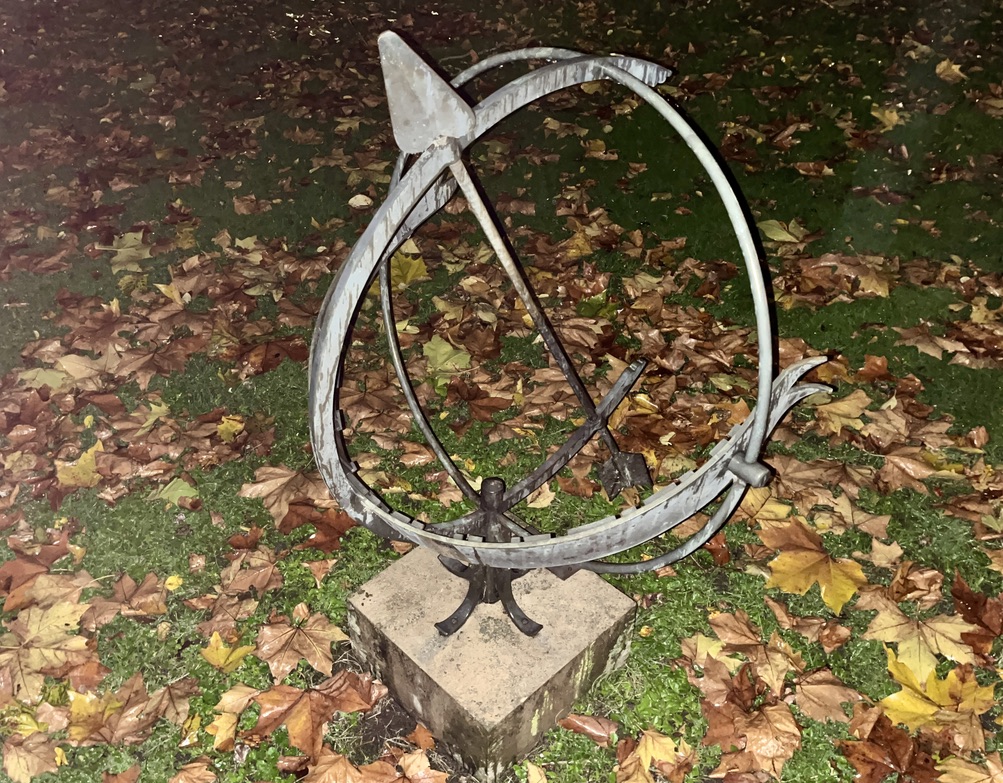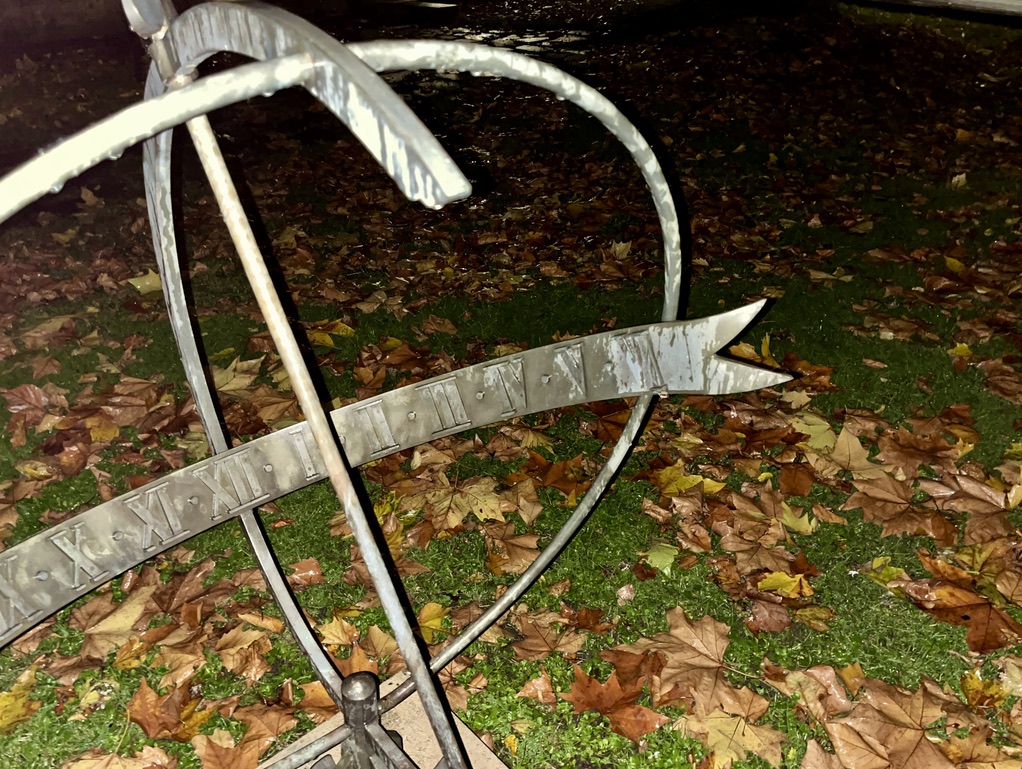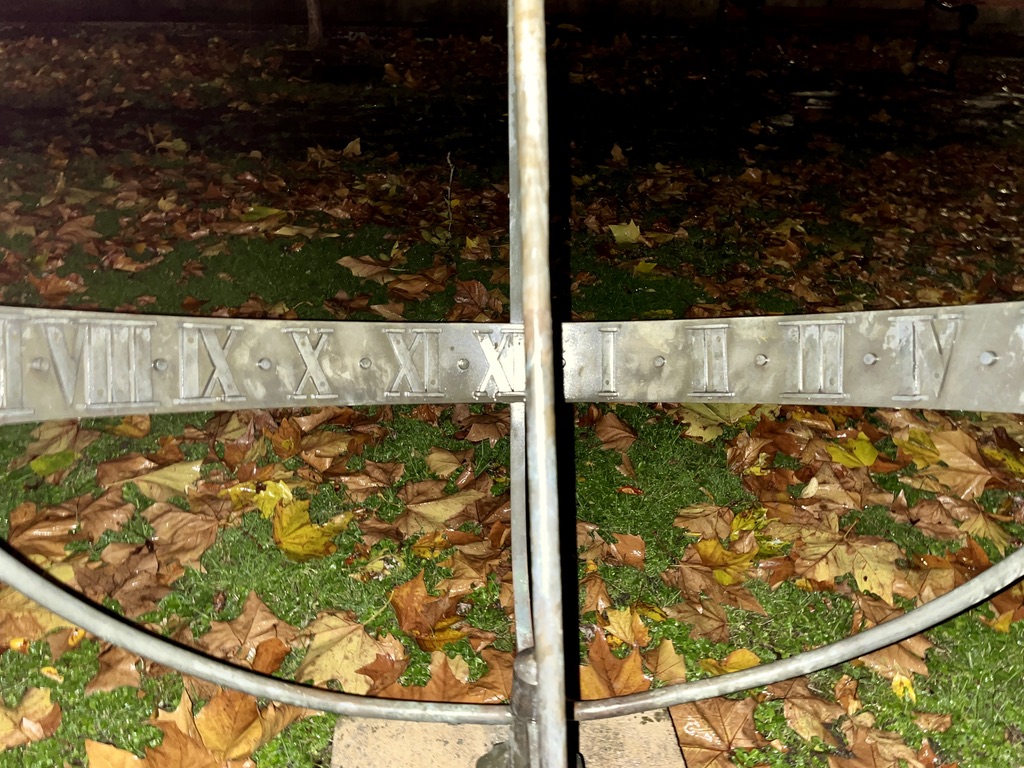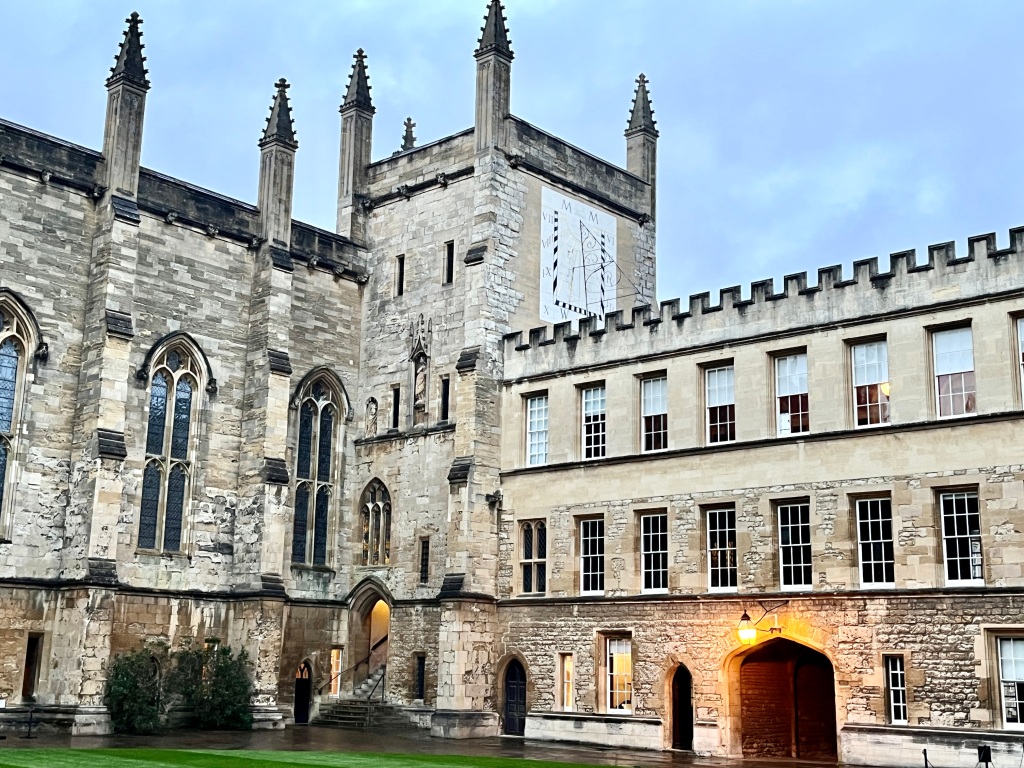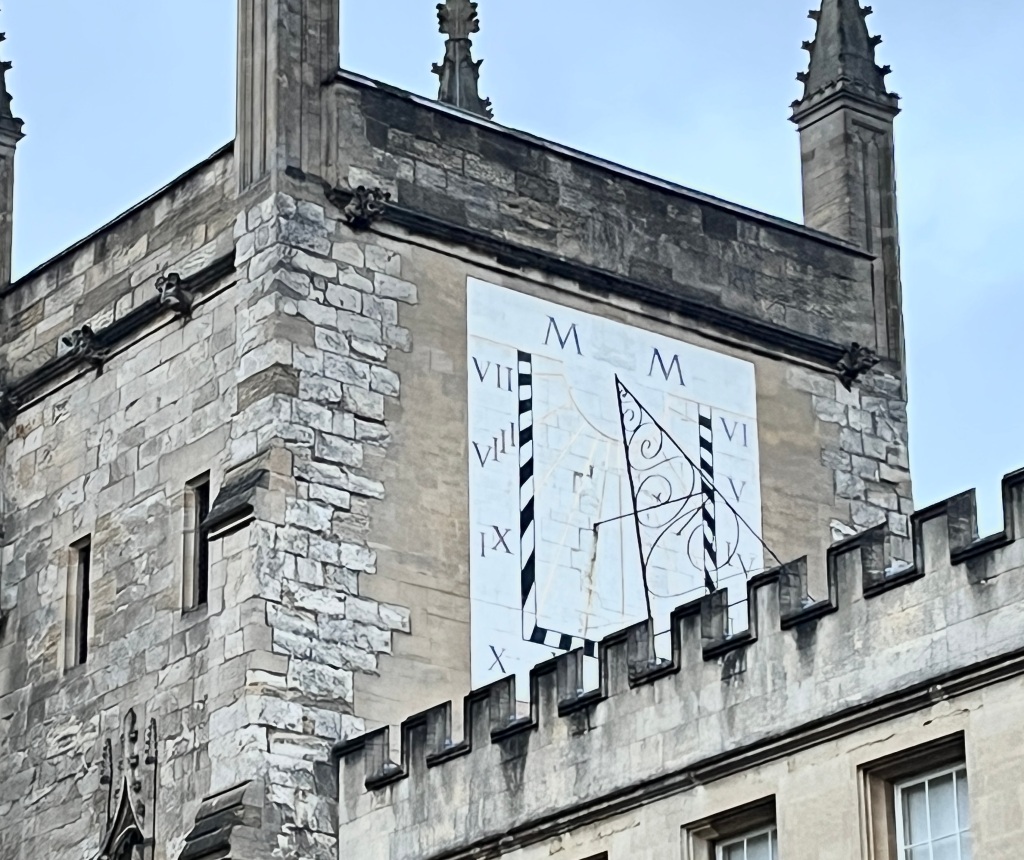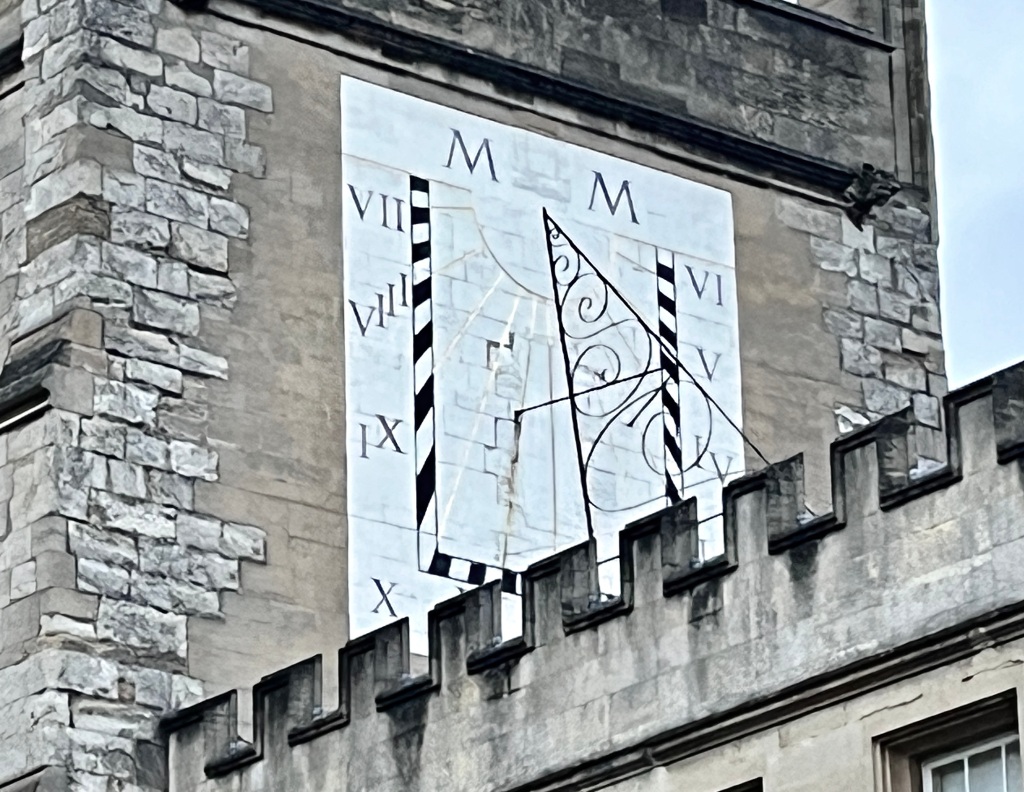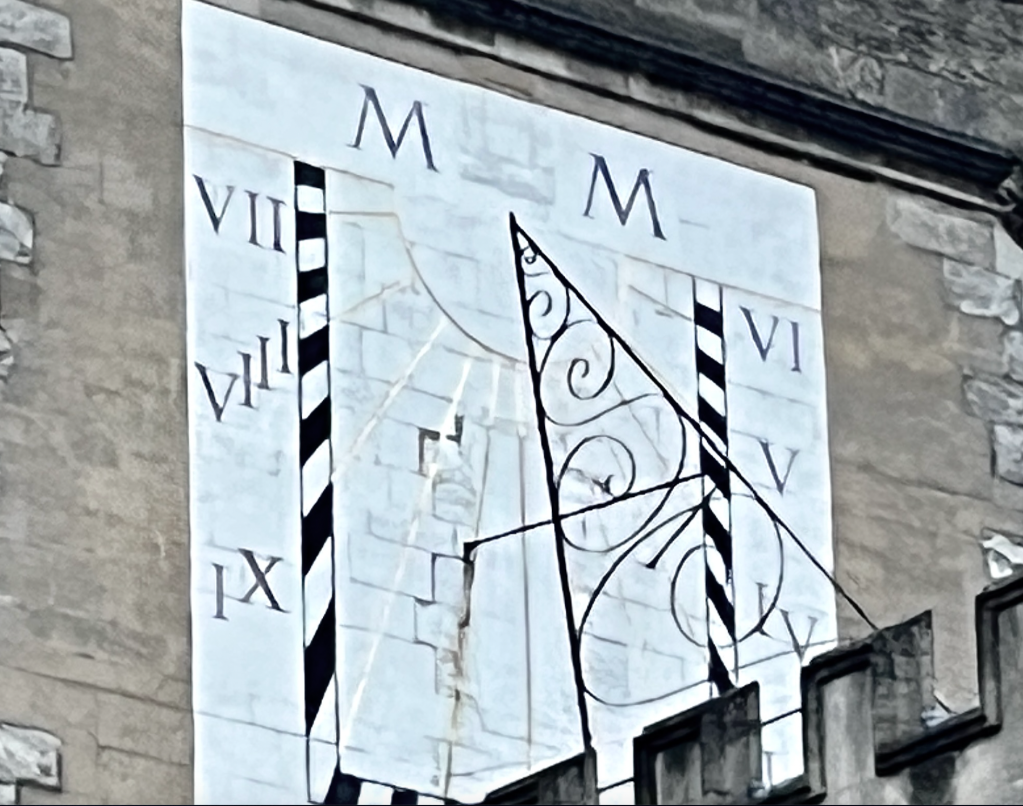
SELWYN COLLEGE CAMBRIDGE – VERTICAL DIAL
DIAL

BRITISH SUNDIAL SOCIETY RECORD
The dial is mounted on the north range of Old Court just above ground floor window level, to the right of staircase D, and declines about 4° west of south. It was designed by Frank King and made by the Cardozo Kindersley workshops in Cambridge. It has Babylonian and Italian hour-lines (showing hours since sunrise and since the previous sunset). The hours are read from the shadow of the brass nodus ball (this type of dial does not require a polar-directed gnomon). Across the top section of the dial, above the winter solstice curve, is a rising sun with the inscription ’ΚΑΙΡΟΝ ΓΝΩΘΙ’ (Know the time). Across the lower part, below the summer solstice, is inscribed ’Collegio suo / lactarius Eboracensis / me dono dedit’ (To his college the Yorkshire dairyman gave me as a gift). Around the rim of the dial are inscribed ’Babylonian hours since sunrise’ and ’Italian hours since sunset’. Ref: BSS Bulletin 22(iii), Sept 2010, pp 2-8, and 22(iv), Dec 2010, pp 9-11.

The use of the Greek motto reflects strong historical links between the College and Ely Cathedral, where the motto is also used. My recent piece on the Cathedral can be seen HERE.
For further details about the Selwyn Dial, see THE SELWYN DIAL – article by the maker Frank King BSS (7pp, detailed analysis) 2010, rich with knowledge.

GSS Category: Scratch Dial; Mass Dial; Re-sited Dial; Dial facing W
Photos and text, BSS; header image Diliff

